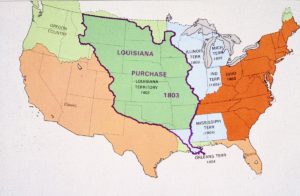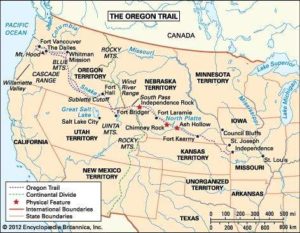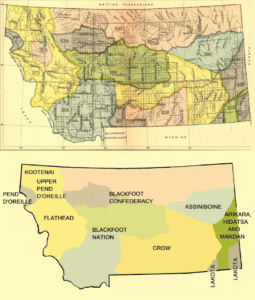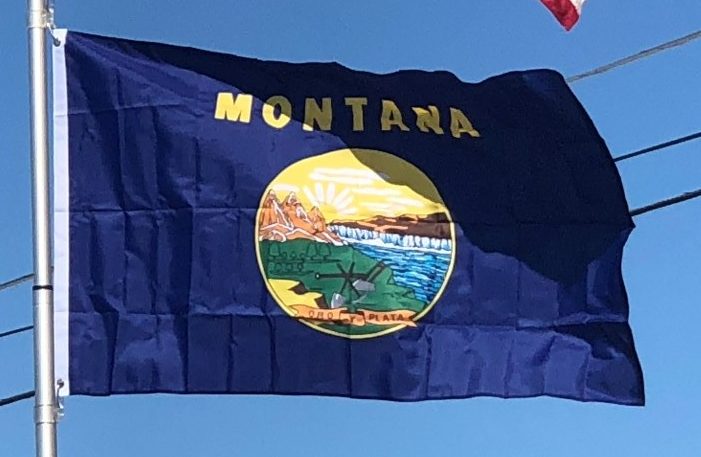The land in Montana east of the continental divide was part of the Louisiana Purchase in 1803.

Subsequent to and particularly in the decades following the Lewis and Clark Expedition, American, British and French traders operated a fur trade, typically working with indigenous peoples, in both eastern and western portions of what would become Montana. The trading post Fort Raymond was constructed in Crow Indian country in 1807. Until the Oregon Treaty of 1846 land west of the continental divide was disputed between the British and U.S. and was known as the Oregon Country. The first permanent settlement by Euro-Americans in what today is Montana was St. Mary’s, 1841, near present-day Stevensville. In 1847, Fort Benton was established as the uppermost fur-trading post on the Missouri River. In the 1850s, settlers began moving into the Beaverhead and Big Hole valleys from the Oregon Trail and into the Clark’s Fork valley.

The first gold discovered in Montana was at Gold Creek near present-day Garrison in 1852. A series of major mining discoveries in the western third of the state starting in 1862 found gold, silver, copper, lead, coal, and later oil, that attracted tens of thousands of miners to the area. The richest of all gold placer diggings was discovered at Alder Gulch, where the town of Virginia City was established. Other rich placer deposits were found at Last Chance Gulch, where the city of Helena now stands, Confederate Gulch, Silver Bow, Emigrant Gulch, and Cooke City. Gold output from 1862 through 1876 reached $144 million; silver then became even more important. The largest mining operations were in the city of Butte, which had important silver deposits and gigantic copper deposits.
Montana Territory:
Before the creation of Montana Territory, various parts of what is now Montana were parts of Oregon Territory, Washington Territory, Idaho Territory, and Dakota Territory. Montana became a United States territory on May 26, 1864. The first territorial capital was at Bannack. The capital moved to Virginia City in 1865 and to Helena in 1875.
Conflicts:
As white settlers began populating Montana from the 1850s through the 1870s, disputes with Native Americans ensued, primarily over land ownership and control. In 1855, Washington Territorial Governor Isaac Stevens negotiated the Hellgate treaty between the United States Government and the Salish, Pend d’Oreille, and the Kootenai people of western Montana, which established boundaries for the tribal nations. The treaty was ratified in 1859. While the treaty established what later became the Flathead Indian Reservation, trouble with interpreters and confusion over the terms of the treaty led whites to believe that the Bitterroot Valley was opened to settlement, but the tribal nations disputed those provisions. The Salish remained in the Bitterroot Valley until 1891.

The first U.S. Army post established in Montana was Camp Cooke in 1866, on the Missouri River, to protect steamboat traffic going to Fort Benton, Montana. More than a dozen additional military outposts were established in the state. Pressure over land ownership and control increased due to discoveries of gold in various parts of Montana and surrounding states. Major battles occurred in Montana during Red Cloud’s War, the Great Sioux War of 1876, the Nez Perce War and in conflicts with Piegan Blackfeet. The most notable of these were the Marias Massacre (1870), Battle of the Little Bighorn (1876), Battle of the Big Hole (1877) and Battle of Bear Paw (1877). The last recorded conflict in Montana between the U.S. Army and Native Americans occurred in 1887 during the Battle of Crow Agency in the Big Horn country. Indian survivors who had signed treaties were generally required to move onto reservations.
